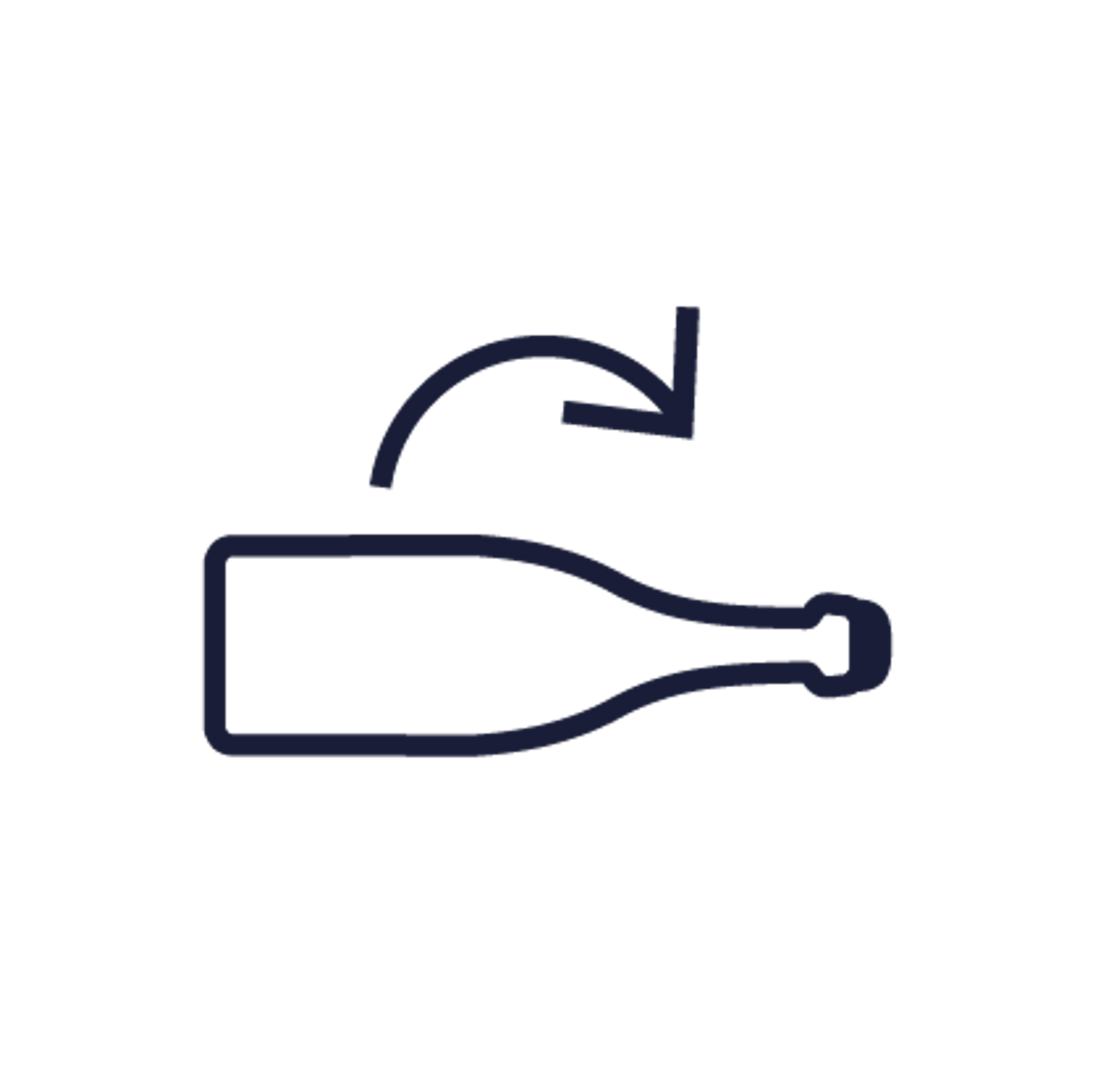the ultimate sparkling wine guide: mastering pairing, storing and serving
Dive into the effervescent world of sparkling wine! Champagne, the bubbly icon, hails from a specific French region and boasts strict production methods, resulting in complex flavours and delicate bubbles.
But the world is brimming with diverse sparklers like Italy's light & fruity Prosecco, Spain's dry & toasty Cava, and France's regional Crémants. Each offers unique styles and price points, waiting to be discovered.

how is sparkling wine made?
Sparkling wine's signature bubbles arise from a fascinating process: after an initial fermentation, a 2nd one occurs, either in tanks for everyday options or within individual bottles for premium versions like Champagne. During this stage, yeast consumes sugar, releasing carbon dioxide trapped within the wine, creating the effervescence.
Champagne utilises specific grapes and extended aging, leading to complex notes and delicate bubbles, while Prosecco, with different grapes and shorter aging, offers a lighter, fruitier expression. Regardless of the method, the yeast sediment is removed, often through techniques like riddling or filtration.
Finally, a touch of sugar may be added for sweetness balance.
Famous sparkling wine regions of the world
food pairing

Salads
- Light & Creamy: Opt for Prosecco or Blanc de Blancs Champagne with their delicate bubbles and citrus notes to complement creamy dressings and delicate greens.
- Bold & Robust: A dry Cava or Brut Champagne cuts through richer salads with grilled meats, walnuts, or strong cheeses.
sauces
- Creamy & Rich: Avoid clashing sweetness. Choose dry sparklings like Brut Nature Champagne or Extra Brut Cava to balance richness.
- Spicy & Fiery: Embrace the bubbles! Crémants d'Alsace or dry Prosecco offer refreshing acidity to tame the heat.
beef
- Grilled & Lean: Look for Blanc de Noirs Champagne or Pinot Noir-based sparkling with earthy notes that complement grilled flavours.
- Rich & Braised: Go bold with mature Champagne or vintage sparkling that have developed richer characters to stand up to robust sauces.
Chicken
- Roasted & Crispy: Dry sparkling like Prosecco or Cava are perfect partners for the crispy skin, their acidity cutting through richness.
- Spicy & Saucy: Crémants de Bourgogne or Blanc de Blancs Champagne with their refreshing fruitiness balance creamy or spicy sauces.
seafood
- Raw & Delicate: Oysters and sashimi crave the clean minerality of Brut Champagne or dry Prosecco.
- Shellfish & Crustaceans: Go bolder with Blanc de Noirs Champagne or Cava's toasty notes, complementing their richer flavours.
fish
- White & Mild: Embrace delicate sparkling like Prosecco or dry Sekt with subtle fruitiness to enhance the fish's natural sweetness.
- Oily & Smoked: Opt for richer sparkling like Blanc de Noirs Champagne or Cava with toasty notes that match the intensity of oily fish.
cheese
- Hard & Salty: Look for dry, aged sparkling like vintage Champagne or Extra Brut Cava to stand up to the cheese's sharpness.
- Soft & Creamy: Go for fruity and slightly sweet sparkling like Moscato d'Asti or demi-sec Champagne to complement creaminess.
desert
- Fruity & Sweet: Match sweetness with sweetness! Moscato d'Asti or sweeter styles of Prosecco sing alongside fruity desserts.
- Chocolatey & Rich: Crémants de Loire or rich Blanc de Blancs Champagne with honeyed notes offer a luxurious pairing for dark chocolate.
sparkling wine cheat sheet
how to store
-

Darkness is key
Light can damage the wine, so store in a cool, dark place like a wine cellar or refrigerator.
-

Temperature matters
Maintain a consistent temperature, ideally 8-10°C, to prevent fluctuations that can affect the bubbles and flavour.
-

Horizontal position
Lay the bottle horizontally to keep the cork moist, ensuring a proper seal.
-

Open bottle timeline
Once opened, store sparkling wine in the refrigerator with a stopper and enjoy within 1-3 days for optimal flavour and fizz.
how to serve
-
Chill factor
Aim for 8-10°C for most sparkling wines. Remember, warmer temperatures mean faster fizz loss.
-
Glass choice
Flutes are classic, but wider tulip glasses are gaining favour, allowing for better aroma appreciation. Avoid coupes, which lose bubbles quickly.
-
The pour
Don't shake the bottle! Gently tilt it and pour slowly down the side of the glass, aiming for a half-full glass to leave room for the bubbles.
-
Top-ups
Pour smaller amounts and top up frequently to maintain the perfect chilled temperature and effervescence.
how to chill
-
Ice bucket method
Fill a bucket with ice, water, and a touch of salt for faster chilling. Submerge the bottle completely for 20-30 minutes for most sparkling.
-
Fridge method
For a slower, gentler chill, place the bottle upright in the coldest part of your fridge for 3-4 hours.
-
Quick chill option
Wrap the bottle in a wet cloth and place it in the freezer for 20-30 minutes (not recommended for long-term storage).






